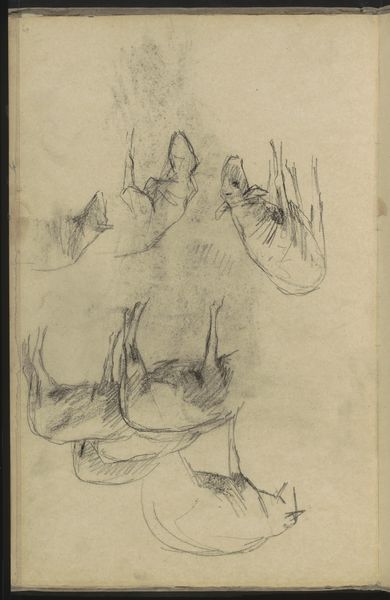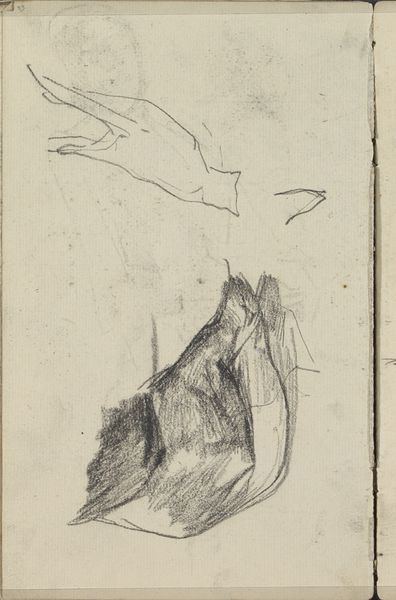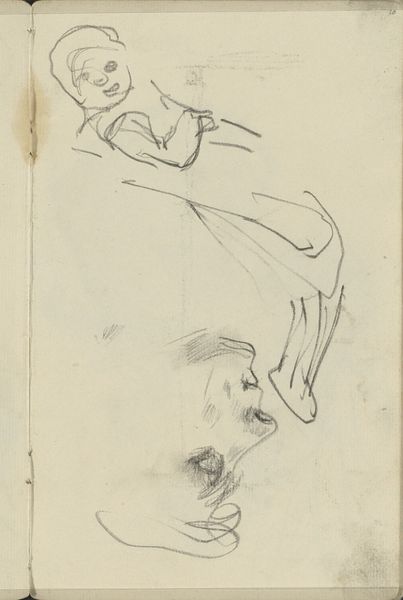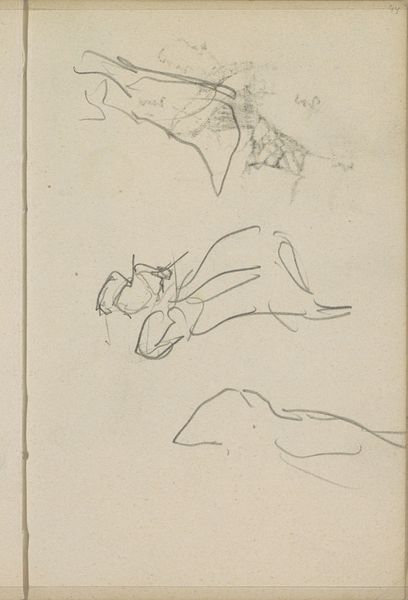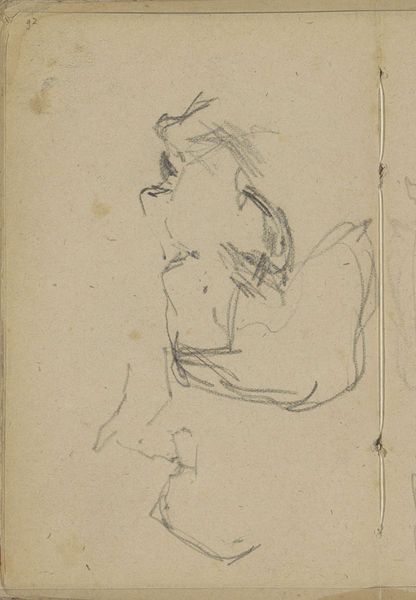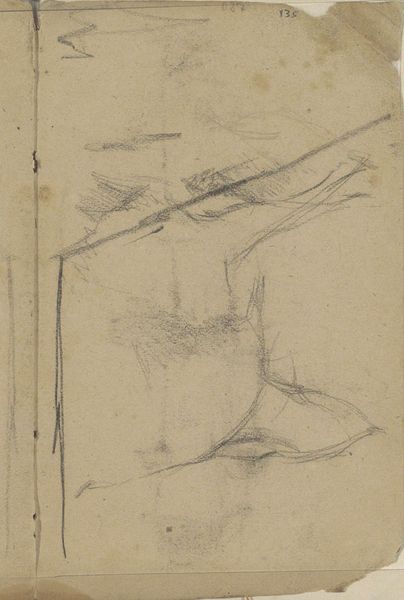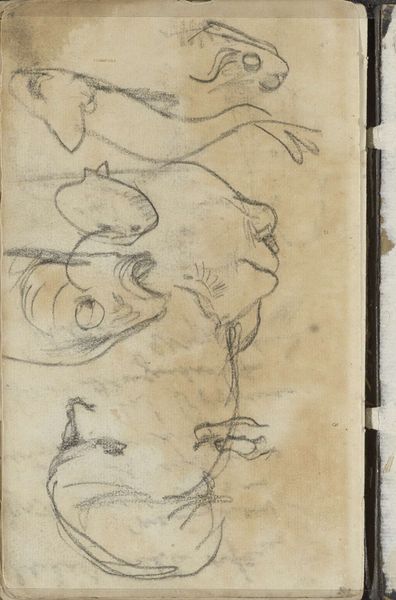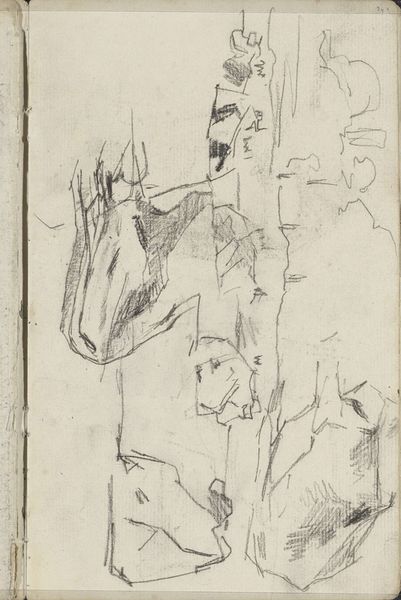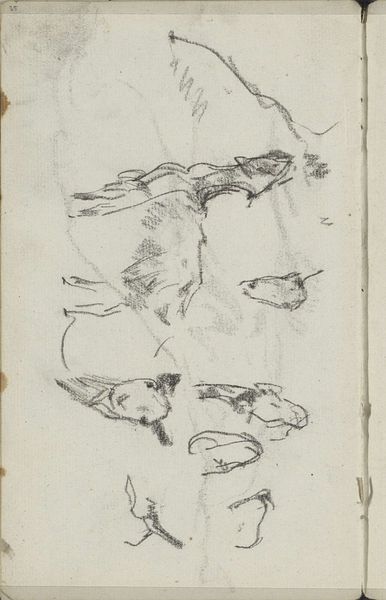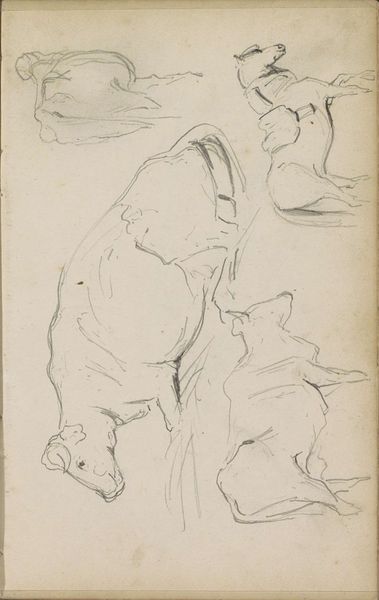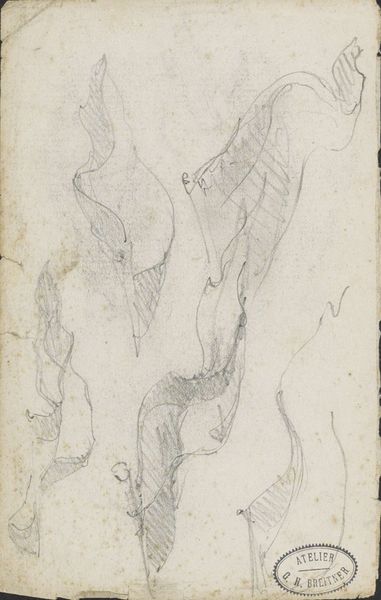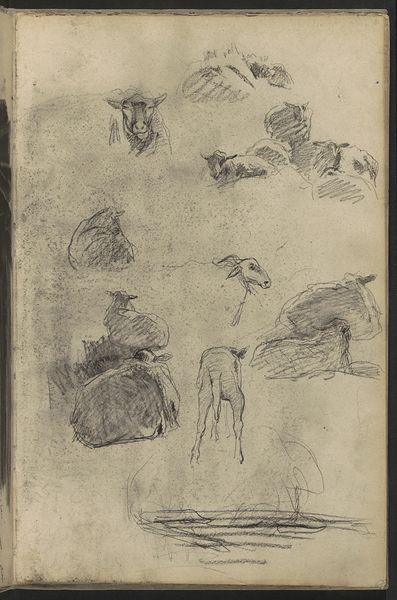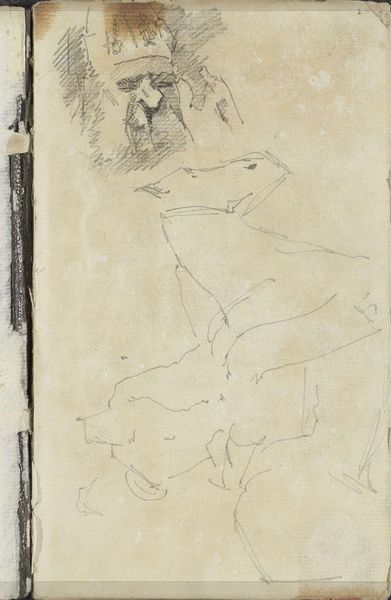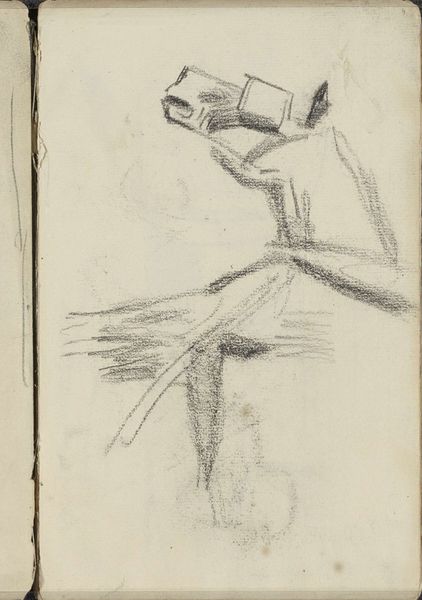
drawing, paper, pencil, graphite
#
drawing
#
impressionism
#
pencil sketch
#
landscape
#
figuration
#
paper
#
pencil
#
horse
#
graphite
#
realism
Copyright: Rijks Museum: Open Domain
Curator: Before us is "Studieblad met paarden," or "Study Sheet with Horses," created by Willem Witsen between approximately 1884 and 1887. The artist employed pencil on paper for this sketch, which is now held at the Rijksmuseum. Editor: It strikes me as a fleeting capture—almost ghostly in its monochrome simplicity, especially with those skeletal tree forms sharing the space with the horse studies. Curator: Indeed. Note the compositional arrangement; Witsen presents us not with a single, unified image but rather a constellation of sketches, separate yet bound together within the frame. Consider the delicate application of graphite, allowing a nuanced exploration of light and shadow that, albeit preliminary, hints at Impressionistic sensibilities. The line quality is critical here; the deliberate tapering suggests a refinement in how the artist's perception takes form on the page. Editor: What interests me, though, is the actual labor. Look at the variations in pressure; these quick studies meant he was really exploring how to translate three dimensions onto the page. Pencil and paper allowed for portability—enabling plein air sketches, perhaps? It reveals the artist grappling with representing animal forms while potentially confronting the constraints of fleeting light and time. How does this rapid execution inform our understanding of academic standards versus a new artistic liberty, considering his era? Curator: Your points open intriguing avenues. There’s definitely a certain urgency, perhaps linked to capturing the ephemeral effects Witsen admired. If we parse this work with the tools of semiotics, we begin to see that these seemingly unfinished shapes have clear symbolic meaning. These sketches represent both animal form and nature, yes, but they transcend their explicit imagery by conveying a feeling; that which impressionism achieves so compellingly, but via very elemental materials. Editor: Exactly. And it is through these materials and labor that a finished sketch delivers an expression through the visible working stages of creation itself. To experience the trace and immediacy—that resonates on many material layers. It also humanizes the entire process. I'd like to consider the accessibility of pencil and paper too: Witsen did not have to invest significant wealth in preparatory art materials to record his surroundings and his perspective. Curator: This detailed consideration truly enriches our appreciation for both artistry and the work's cultural genesis. Editor: Yes. It underscores how closely intertwined material considerations and aesthetic intent are.
Comments
No comments
Be the first to comment and join the conversation on the ultimate creative platform.
